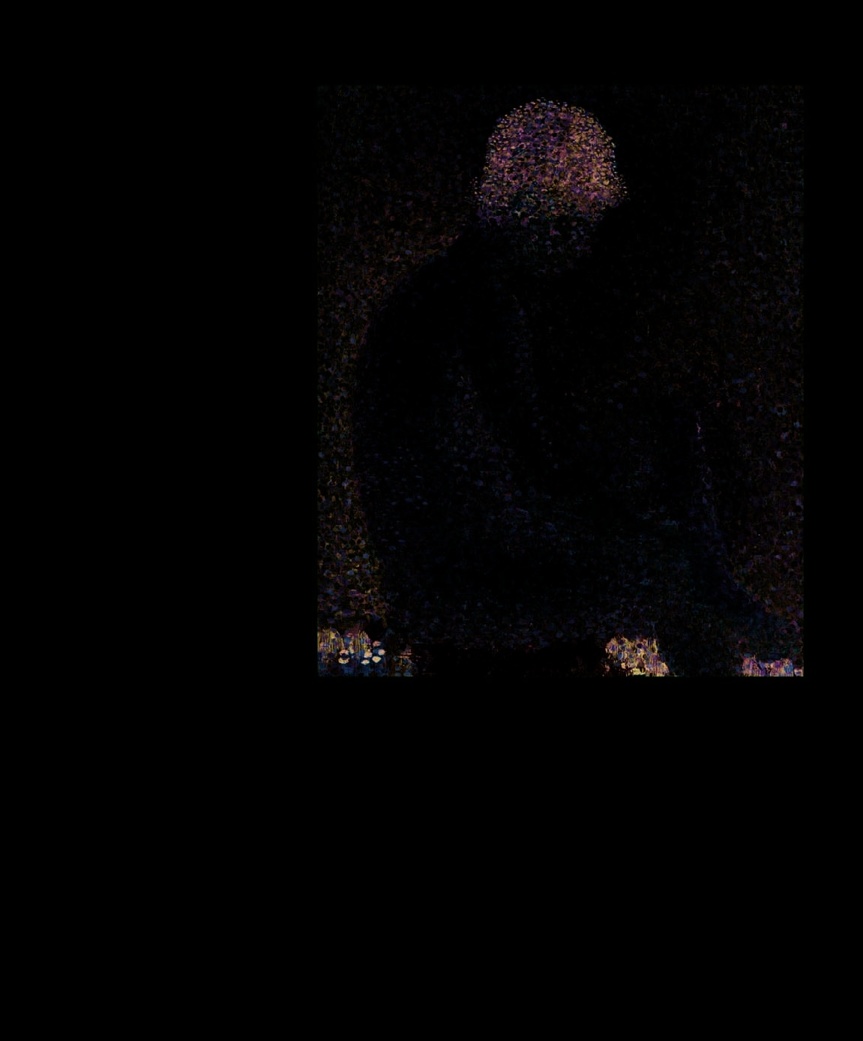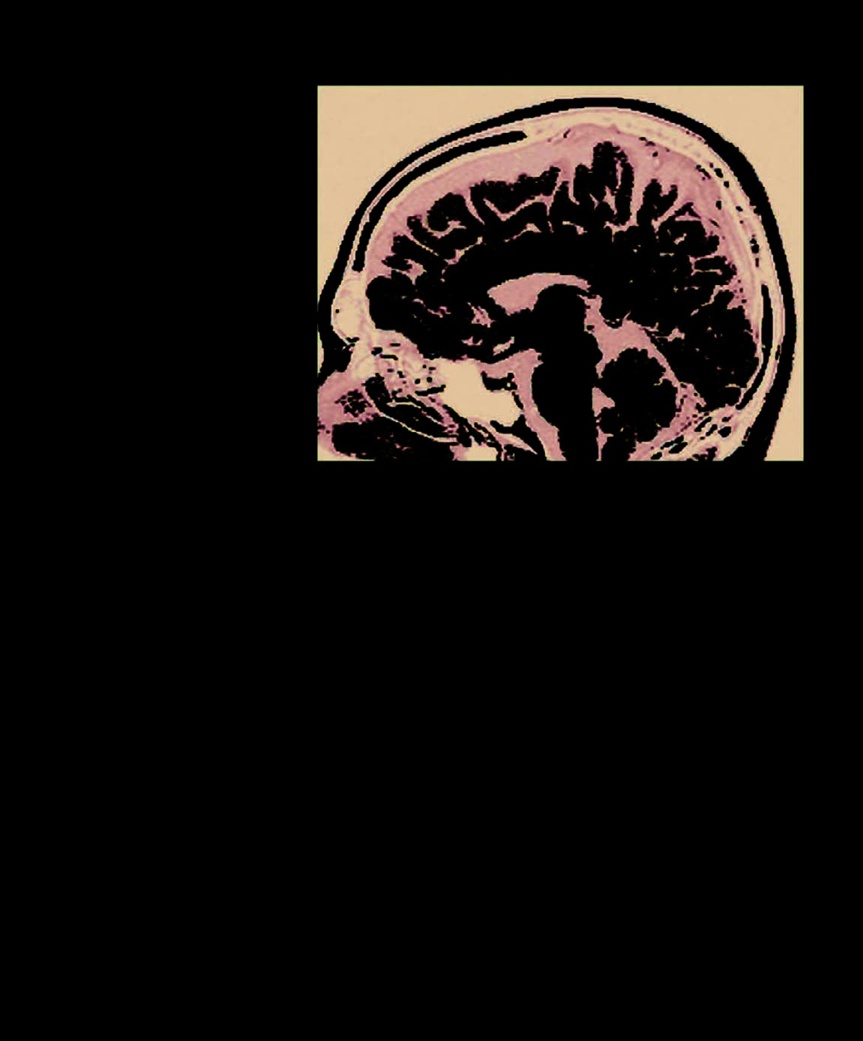The Psychology Book (14 page)
Read The Psychology Book Online
Authors: Unknown

But James found it hard to
might combine to make sense is
from one conclusion to another by
imagine the structure of a unified
to suppose “that things that are
the constant stream of thoughts,
consciousness. He likened it to a
known together are known in
whose purpose is to pull us ever
group of 12 men: “Take a dozen
single pulses of that stream.” Some
forward in this way. There is no
can
one
but
the
sentence
think
only
I
of
word
not
whole
The 12-word sentence problem
was used by James to
illustrate his difficulty in grasping how a unified consciousness
stems from separate thoughts. If each man is aware of just one
word, how can there be a consciousness of the whole sentence?

PHILOSOPHICAL ROOTS 43
Dots of pure color
make up this work
by the French Post-Impressionist
painter Georges Seurat. Yet our brain
combines these separate elements so
that what we see is a human figure.
final conclusion; consciousness is
not a thing but a process, which
is constantly evolving.
James also drew attention to the
personal nature of consciousness,
stating that thoughts do not exist
independently of a thinker—they
are your thoughts or mine. Each one
is “owned” by someone, and never
“comes into direct sight of a thought
in another personal consciousness
than its own.” And it is these
thoughts “connected as we feel
them to be connected” that form
the self. As thoughts cannot be
divided from the self, James said
that investigating this self should
be the starting point of psychology.
Experimental psychologists did not
agree, because “the self” cannot be
offered up for experimentation, but
James thought it was enough to
work with our understanding of a
self that does certain things and
feels in certain ways. He called this
the “empirical self,” which
manifests itself through its
behavior, and suggested that it
consists of several parts—the
material self, spiritual self, and
physiological condition. To illustrate
Another example, according to his
social self—each of which can be
this theory, James used the example
theory, would be that you feel happy
studied through introspection.
of seeing a bear, then running away.
because you are conscious that you
It is not the case that you see the
are smiling; it is not that you feel
Theory of emotion
bear, feel afraid, and then run away
happy first, and then smile.
In the early stages of his research
because of the fear. What is really
into consciousness, James realized
happening is that you see the bear
Pragmatism
that the emotions play an important
and run away, and the conscious
Related to James’s theories about
role in our daily lives, and went on to
feeling of fear is caused by the
consciousness is his approach to the
develop, with his colleague Carl
action of running. This contradicts
way we believe things to be true or
Lange, a theory about how they
what most people might think, but
not. He stated that “truths emerge
relate to our actions and behavior.
James’s view was that the mind’s
from facts... but... the ‘facts’
What was to become known as the
perception of the physical effects of
themselves are not true; they simply
James–Lange Theory of Emotion
running—rapid breathing, increased
are. Truth is the function of the
states that emotions arise from your
heartbeat, and perspiring heavily—
beliefs that start and terminate
conscious mind’s perception of your
is translated into the emotion of fear.
among them.” ❯❯

44 WILLIAM JAMES
Curies’ scientific knowledge had
assessing consciousness as
been questioned and modified, but
objectively as possible, and
its core truths remained intact.
to understand its underlying
mechanisms—both physical
Further studies
and psychological.
The period following James’s death
Modern neuroscience has
There is but one
saw the rise of the behaviorist
demonstrated that there are
indefectibly certain
movement, and a decline of interest
mechanisms of consciousness.
truth… the truth that the
in consciousness. Consequently,
By the closing years of the 20th
present phenomenon of
little theorizing on the subject
century, the British molecular
consciousness exists.
happened from around the start of
biologist and biophysicist
William James
the 1920s up until the 1950s. One
Francis Crick was claiming that
important exception was the
consciousness is related to a
German-based Gestalt movement,
specific part of the brain—the
which emphasized that the brain
prefrontal cortex area, which is
operates in a holistic way, taking
involved in thought processes
account of whole conscious
such as planning, problem-solving,
experiences, rather than separate
and the control of behavior.
James defined “true beliefs” as
events—just as when we look at a
Research carried out by the
those that the believer finds useful.
picture, we see not just separate
Colombian neuroscientist Rodolfo
This emphasis on the usefulness of
dots, lines, and shapes, but a
Linas links consciousness to
beliefs lies at the heart of the
meaningful whole. This concept
the activities of the thalamus in
American philosophical tradition of
is behind the now famous Gestalt
conjunction with the cerebral
pragmatism, which was central to
phrase: “The whole is greater than
cortex. The thalamus, a structure
James’s thinking.
the sum of the parts.”
embedded deep in the center of the
In the course of our lives, James
Since the 1980s, however,
brain, is responsible for regulating
claimed that we are continually
psychologists and neuroscientists
vibrations inside the brain at
testing “truths” against each
have developed a new field of
certain frequencies; if these regular
other, and our conscious beliefs
research called “consciousness
rhythms are disrupted—by an
keep changing, as “old truths”
studies,” focusing on two main
infection or genetic causes—then
are modified, and sometimes
areas of interest: the content of
an individual may experience
replaced by “new truths.” This
consciousness, as reported by
neurological disorders, such as
theory is particularly relevant to
people who are considered to be
epilepsy and Parkinson’s disease,
the way that all scientific research,
normal and healthy; and the
as well as psychological conditions,
including psychology, progresses.
consciousness of people whose
such as depression.
James cited the discovery of the
state of awareness has been
radioactive element radium by
impaired in some way. The latter
Pierre and Marie Curie in 1902
group includes cases, such as
as an example. In the course of
when the subject is in a “persistent
their investigations, the Curies
vegetative state” (PVS)—in which
found that radium appeared to
patients in a coma are awake and
give off unlimited amounts of
breathing independently, but have
energy, which “seemed for a
apparently lost all higher brain
moment to contradict our ideas of
functions. The goal with both paths
the whole order of nature.”
of research is to try to find ways of
However, after conscious
consideration of this revelation,
Pierre and Marie Curie’s
research,
they concluded that “although it
like most scientific work, modified, rather
extends our old ideas of energy, it
than totally contradicted, earlier theories.
causes a minimum of alteration in
New “truths,” James claimed, constantly
their nature.” In this instance, the
modify our basic beliefs in a similar way.

PHILOSOPHICAL ROOTS 45
MRI scans of the brain
have
helped to identify structures such
as the thalamus, seen in the center
of this scan, that appear to have
links to consciousness.
But when it comes to definitions
of consciousness, modern attempts
still remain vague and difficult to
apply. For example, the American
neuroscientist Antonio Damasio
calls consciousness “the feeling
of what happens,” and defines it
as “an organism’s awareness of
its own self and its surroundings.”
As William James suggested,
more than 100 years earlier,
consciousness is hard to define.
Lasting legacy
An edited version of James’s 1890
book,
The Principles of Psychology
,
is still in print, and his ideas have
been a major influence on many
Before James started teaching the
vastly beneficial discipline owes
psychologists, as well as other
subject at Harvard in 1875, there
much to his work. In 1977, in a
scientists and thinkers. The
were no independent psychology
speech celebrating the 75th
application of his pragmatic
courses available in any American
anniversary of the formation of
philosophy to facts—concentrating
university. But within 20 years,
the American Psychological
not on what is “true” but on what it
around 24 colleges and universities
Association, David Krech, then
is “useful to believe”—has helped
in the US had recognized
Professor Emeritus in psychology
psychology move on from the
psychology as a distinct academic
at the University of California at